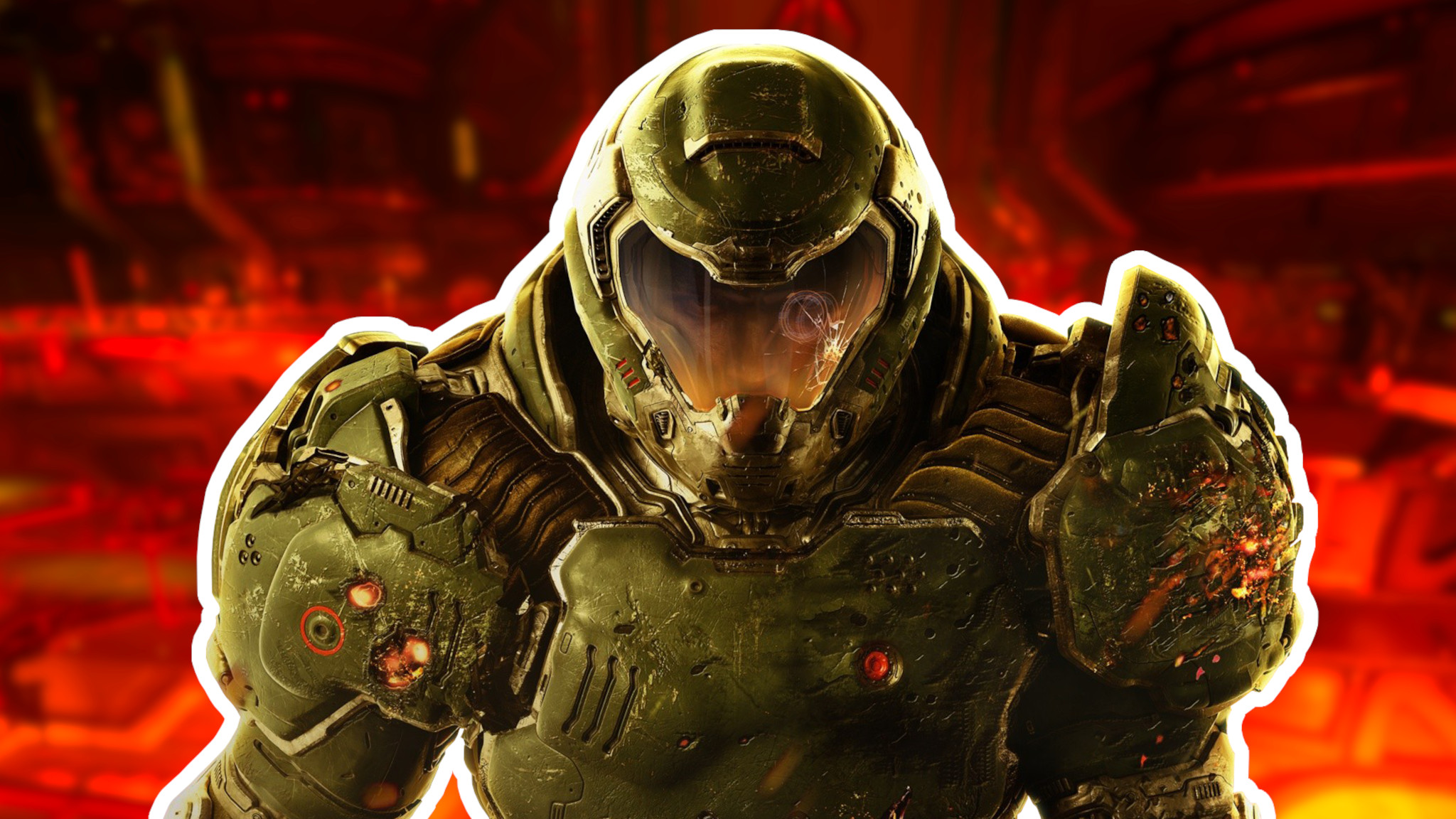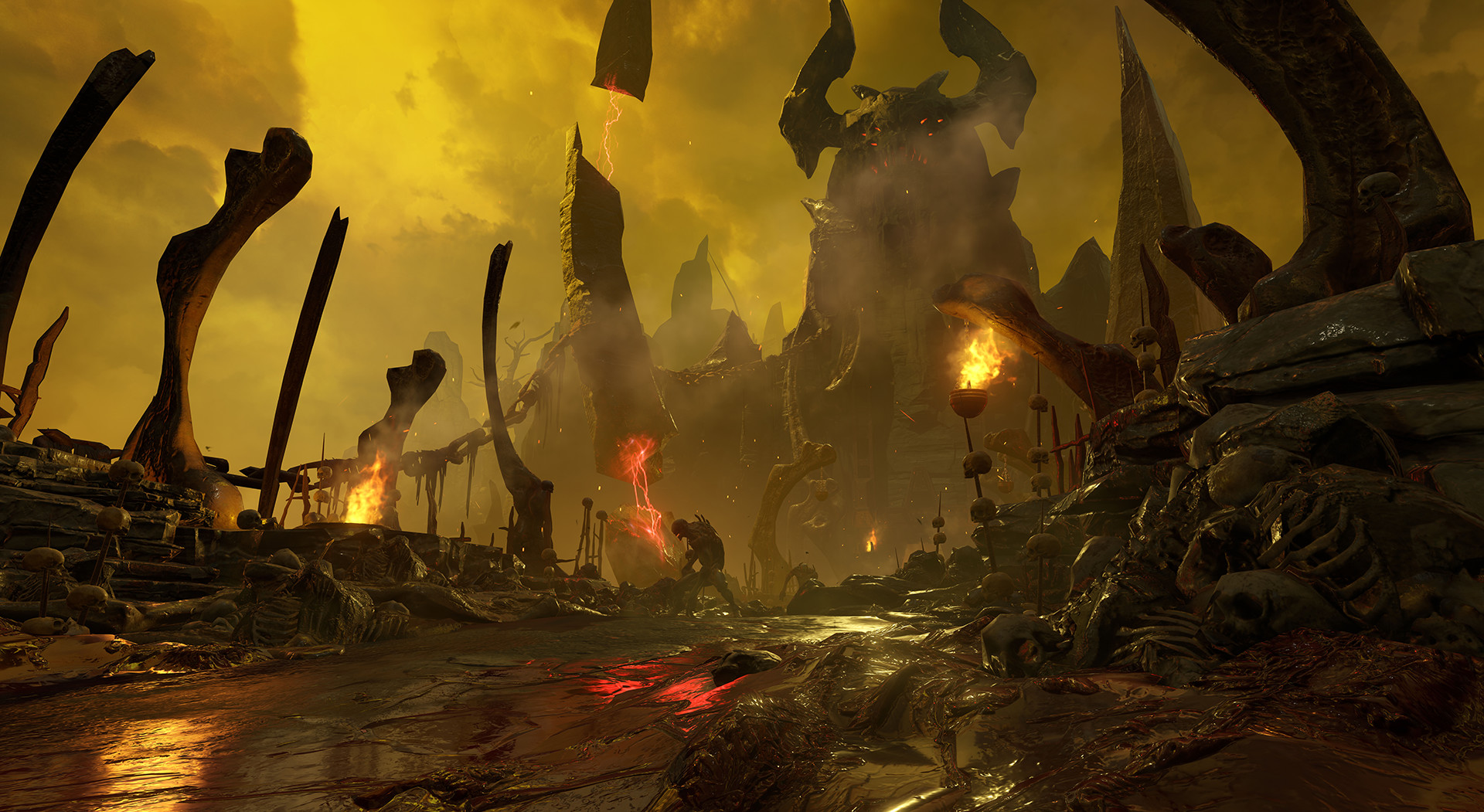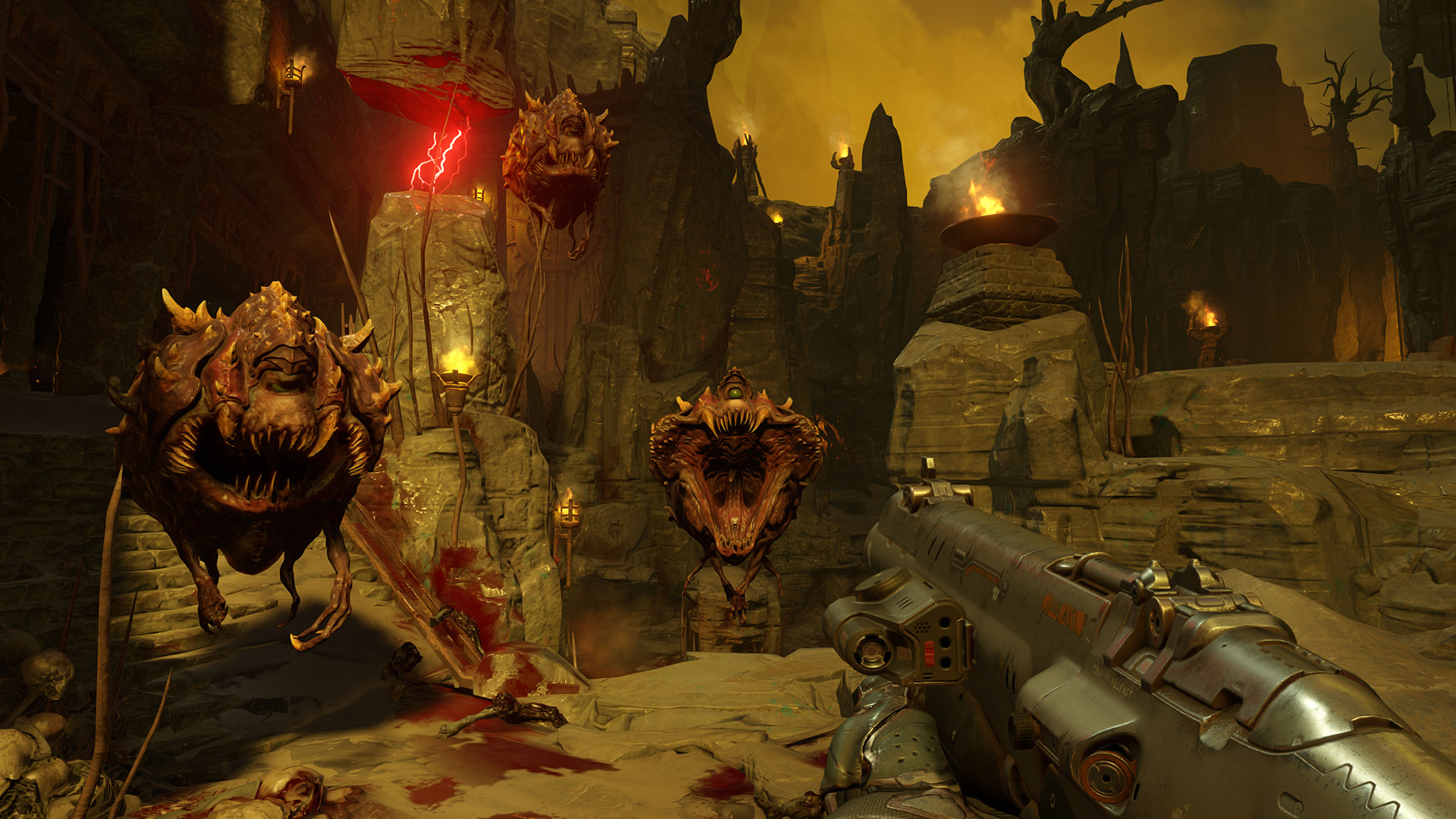
On May 13th, 2016, one of the most significant reboots in gaming history was unveiled – DOOM by id Software. This game, often regarded as one of the finest modern first-person shooters ever created, is still a topic of discussion among fans, almost six years since its release on PC, Xbox One, and PS4. It not only revitalized an iconic and influential franchise but also set a precedent for single-player first-person shooter games in the future. The game series has since expanded with DOOM Eternal and the eagerly awaited prequel, DOOM: The Dark Ages. It’s no exaggeration to say that the 2016 version of DOOM left a lasting impression, and its echoes, as the Slayer returns, can still be heard today.
On occasion, we might perceive our favorite games through a nostalgic lens. Allow me to digress for a moment; I vividly recall playing “The Elder Scrolls V: Skyrim,” another remarkable game from Bethesda, when it was released on November 11, 2011. I eagerly purchased my copy at midnight, and spent the next 10 hours straight immersed in its world, followed by a brief break for brunch, before returning to play for approximately another 10 hours. At that time, I would have confidently declared “Skyrim” as the Game of the Year for 2011.
A year from now, I find myself eagerly embarking on another journey through Tamriel, this time with a fresh play of Skyrim. The thrill of becoming a Dragonborn once more and learning the Way of the Voice had me buzzing with anticipation. Yet, as I delved back into this world, something felt off compared to my initial adventure. Maybe it was the sense of familiarity that robbed it of its charm. Or perhaps I should have waited longer before revisiting. Regardless, there was no denying the fact: I grew tired of it all.
Reflecting on the past, I found that by 2012 and 2013, I had played numerous games which resonated more with me than Skyrim. Initially, I enjoyed Skyrim and its predecessor Oblivion immensely when they were first released, but as time passed, they became as stale as milk. Don’t get me wrong; Skyrim remains an incredible game, having been ported to various consoles since its launch, making a significant impact on millions of gamers worldwide. However, after experiencing masterpieces such as The Last of Us, Journey, Fez, Forza Horizon, Grand Theft Auto V, and many more, revisiting the bug-filled world of Tamriel proved challenging. Despite my cherished memories of Skyrim, I wouldn’t invest much time in it at present.

As I pondered returning to the 2016 version of DOOM, a game I’ve held in high regard for nearly a decade, I found myself asking: Will this iconic first-person shooter, which I once considered a remarkable technical achievement in gaming, still stand tall today? Or will it lose its luster and become just another nostalgic reminiscence? To my delight, DOOM, crafted by id Software, not only continues to shred (and tear), but also remains the gold standard for an exceptional first-person shooter experience.
A first-rate first-person shooter consists of two key elements: gameplay and performance. The gameplay aspect might seem self-explanatory, but the shooting mechanics in a shooter must be enjoyable. This ties closely with the other essential element, which is the game’s performance. A significant reason why a shooter feels satisfying lies in its technical prowess. Many players are quick to criticize any shooter that falls below 60 frames per second. If either of these components fails, it can severely diminish the overall enjoyment.
These types of action-packed games such as “Call of Duty,” “Apex Legends,” and “Destiny” tend to attract gamers due to their outstanding gameplay and consistent performance. They usually stand out among other games released each year, although they do have specific issues that are often discussed by their respective communities. Yet, these games continue to draw players back because they offer enjoyable experiences and a sense of familiarity. Interestingly, the 2016 release of “DOOM” not only meets these criteria but exceeds them, giving it an edge over its competition.

For nearly three decades, id Software has been leading the way in 3D gaming technology, starting from its debut in 1993. Different versions of their id Tech engine have been instrumental in advancing 3D graphics, shaping modern gaming as we recognize it today. The 2016 release of DOOM is a testament to this ongoing legacy, offering visuals that remain striking even nine years later, all while maintaining strong performance.
Upon revisiting the Martian demon incursion, I switched from console gaming to playing on PC. Remarkably, the game still looks fantastic. Although there are some areas that subtly reveal their age, overall, DOOM from 2016 continues to impress, particularly in motion. It may sound gruesome, but witnessing all that flesh and blood being torn off demons as the Slayer fights, shoots, and smashes his way forward is a visually captivating experience. With my setup, it ran smoothly at an unwavering 100 frames per second.
2016’s DOOM demonstrates the power of utilizing available tools to craft timeless creations. Nine years old, it holds its own against contemporary games in terms of visual appeal and smooth gameplay. Time and again, this revival has been praised for its technical prowess, a sentiment I believe remains valid today.
2016’s DOOM stands out from games like Call of Duty or Battlefield by encouraging players to stay active rather than hiding behind cover and taking shots. Instead, the game challenges players to take risks and dive into the action to survive. The combat in DOOM is designed as a risk-and-reward system, where using all weapons and abilities available to the Slayer is crucial for success. It’s not just about running and shooting everything on screen until everything is destroyed; there’s also an element of strategy involved to keep players engaged.

In this game, since these creatures pack quite a punch when attacking, maintaining health and armor is crucial for staying alive. Scattered across the environment are health and armor kits, but players also have the option to perform a glory kill – a stylish and violent melee attack that can be performed after an enemy has sustained enough damage. These chances are indicated by the enemy flashing either orange or blue. Much like ammo, when it becomes scarce, players can use a chainsaw to instantly eliminate demons, causing a fountain of ammo packs to erupt from their corpse, ready for the player to collect.
In every interaction, the player finds themselves perpetually low on health and ammunition, heightening the excitement of each conflict. Frequently, the Slayer would find himself at death’s doorstep, but a timely shot results in a glory kill, granting him a temporary reprieve. Usually, inventory management in first-person shooters can be aggravating, yet id Software has crafted a system that transforms it into an integral part of the gameplay, forcing you to bashed a demon’s brains against a wall. This combat system is both cool and distinctive, standing out among other first-person shooters, and it hardly requires any enhancement.

The experience is encased in a distinctly metallic container, reminiscent of the show’s original origins. Mick Gordon’s intense, guitar-focused music, which blares as the Slayer leaves naught but destruction in his wake, is unparalleled within the gaming world. Although games like Metal: Hellsinger, a rhythm-based first-person shooter inspired by DOOM and featuring artists such as Serj Tankian (System of a Down), Randy Blythe (Lamb of God), Matt Heafy (Trivium), Tatiana Shmayluk (Jinjer), and others, have come close, none have achieved the same level of greatness that 2016’s DOOM did. Despite being an excellent rhythm shooter in its own right, it falls short of matching the heights attained by the 2016 DOOM game.
9 years ago, DOOM made its comeback, reigning once again as the ruler of the first-person shooter genre. This game serves as a heartfelt tribute to id Software’s enduring series, skillfully updating one of the most impactful video games ever created. It carries on the legacy of this franchise as a groundbreaking achievement in gaming technology, and one that can withstand the passage of time. While it may not be played on a calculator in 2016 any time soon, DOOM remains one of the top-tier first-person shooters from the past decade, and will undoubtedly continue to be enjoyed for many years to come.
Read More
2025-04-28 20:14